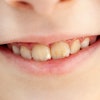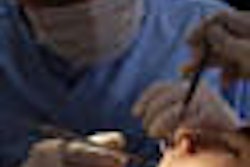
As it rolls out clinical recommendations, the ADA is on a mission to guide general dentists to a decision-making process that combines the doctor's experience and the patient's preference with scientific evidence.
After a 2008 expert panel and an extensive scientific evidence review concluded that the placement of sealants could prevent the progression of noncavitated carious lesions (NCCLs) in children and young adults' secondary teeth, the ADA adopted the treatment option as an officially recommended course of action in 2010.
But the response has been lackluster when it comes to treatment decision-making for NCCLs, according to a survey in the latest Journal of the American Dental Association, (September 2011, Vol. 142:9, pp. 1033-1040).
For the study, researchers from the Maurice H. Kornberg School of Dentistry at Temple University mailed a questionnaire to 2,400 randomly selected general dentists (2,000) and pediatric dentists (400) from the ADA's Survey Center database of ADA members and nonmembers.
The questionnaire was divided into three sections. The first, "Treatment Decisions," contained two photos of lesions at the same clinical level. The NCCLs displayed were on a permanent first molar and a premolar in a 12-year-old child. Answers to the questions asked were offered in a multiple-choice format.
The next section, which asked for opinions about sealant usage, was also in a multiple-choice format. The last asked for demographic information about the respondent.
Surprising findings
A total of 771 questionnaires were returned, 595 from general dentists and 176 from pediatric dentists. For the data analysis, the researchers created weights with two ranking variables, graduation year, and sex. The data was stratified based on pediatric or general dentistry, patients seen per week (1-25, 26-50, 51-75, 76-100, and 100+), and graduation year (prior to 1980, 1980-1990, and after 1990).
The study authors found that 37.4% and 42.3% of general dentists and pediatric dentists, respectively, would use a sealant to treat an NCCL in a molar of a young patient, despite a 2010 recommendation from the ADA to seal NCCLs in children and young adults.
Almost 40% of dentists responded that it was not a good practice to seal in early caries, the researchers noted. However, 24.1% dentists who did not seal in early caries were willing to consider it, the researchers noted. About 55% of the dentists agreed that sealants should be placed on early carious lesions in children, adolescents, and young adults to reduce the percentage of lesions that progress, while 32% disagreed. In adults, 34% of the dentists agreed with sealing in caries, while nearly half of the respondents disagreed.
When instructed to assume that a radiograph of the tooth showed no evidence of caries extending into dentin of a molar, 37% of general dentists and 42% of pediatric dentists said they would seal the lesion and follow up during regular checkups. However, 21% of general dentists and 30% of pediatric dentists opted to open the fissure and place a small resin-based restoration or sealant.
"This may lead to an irreversible restorative cycle, with replacement restorations of increasing size and potential iatrogenic damage, for a lesion that did not have to be touched in the first place," the study authors wrote.
When radiographic imaging showed caries extending into the inner one-half of dentin, 90% of all respondents said they would place a conventional occlusal composite or amalgam restoration. When the caries extended into the outer one-half of dentin, of all those surveyed, 44% opted to open the fissure and seal it, while 49% would restore it. Less than 4% said they would seal the lesion.
Younger dentists still drill and fill
Surprisingly, younger dentists were less inclined to take a conservative approach. When the researchers stratified the results according to year of graduation, they found that a higher proportion of younger dentists than older dentists chose the option of opening the fissure and placing a small resin-based restoration or sealant (16.5% of those who graduated before 1980, compared with 25.6% of those who graduated after 1990; p < 0.05).
In comparison with the oldest group of dentists, these younger dentists also indicated that they were less likely to re-examine the lesion at the next recall visit (40.1% of those who graduated before 1980 versus 36.6% of those who graduated after 1990; p < 0.05).
While the researchers were encouraged by the fact that four of 10 dentists chose the option of opening a fissure and placing a small resin-based restoration or sealant in a tooth for which there was radiographic evidence of caries extending into the outer one-half of dentin, "thus conforming to concepts of minimally invasive dentistry," they warned that dentists may be relying too much on radiographic examination.
"These findings may suggest that dentists are relying to a great extent on radiographic examination for occlusal caries diagnosis when, in fact, this diagnostic tool may be far from accurate," they wrote.
In addition, despite a significant body of evidence indicating that arrest of NCCLs is possible even when dentin is involved, the researchers said they are unclear why many dentists are unaware of or doubt the conclusions of such research. They were also alarmed that so many recent graduates were less likely to take a conservative approach to NCCLs than their more experienced counterparts.
"The fact that dentists in our survey who graduated after 1990 were part of this trend contradicts what other survey findings have shown regarding recently graduated dentists adopting sealants more readily than dentists in practice longer," the study authors wrote.
In general, the adoption of noninvasive caries management has been slow to take hold in the dental community, and more training in current cariology concepts in dental schools is required, the researchers noted. Reimbursement mechanisms have yet to catch up to such methods, providing further roadblocks to widespread acceptance, they added.



















